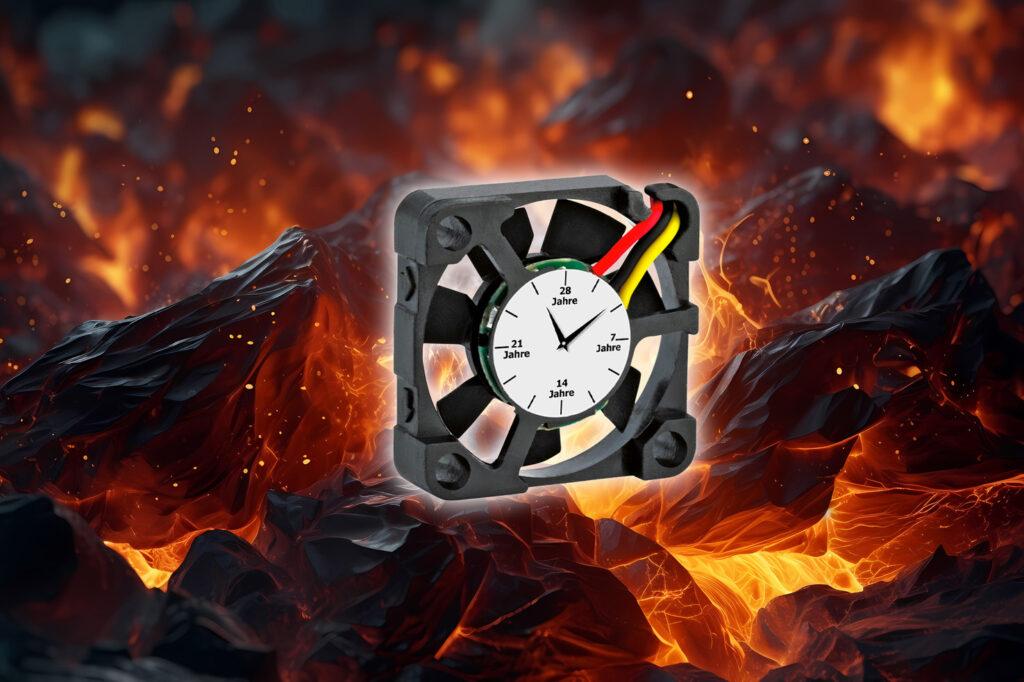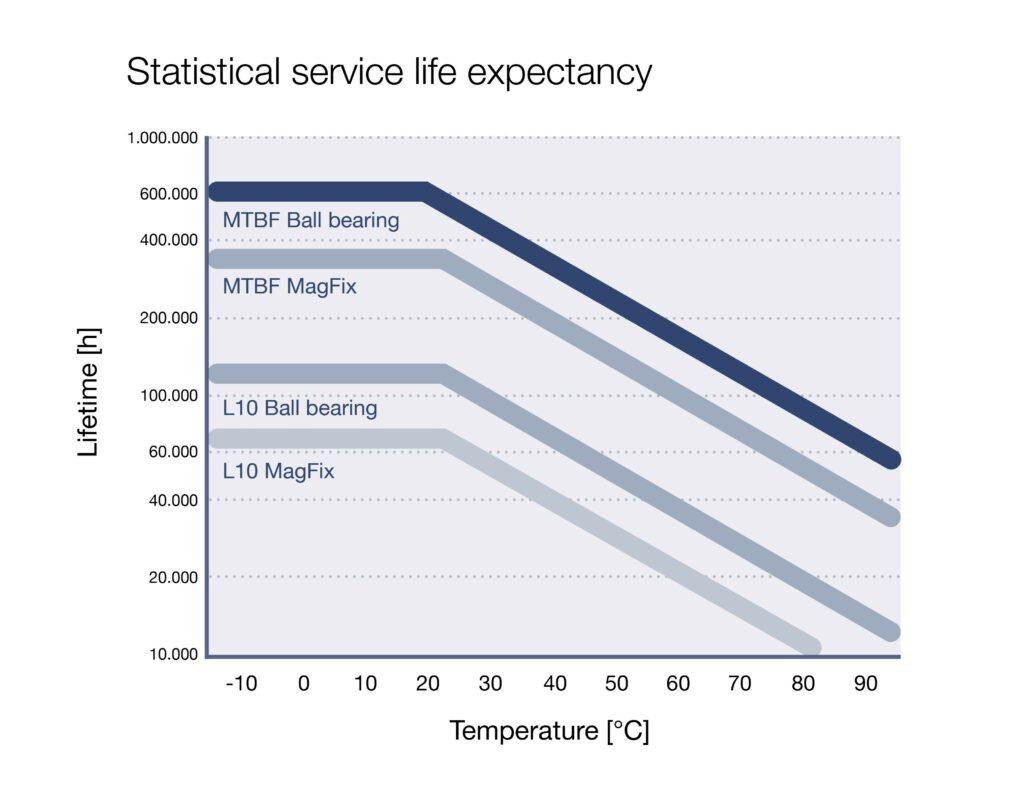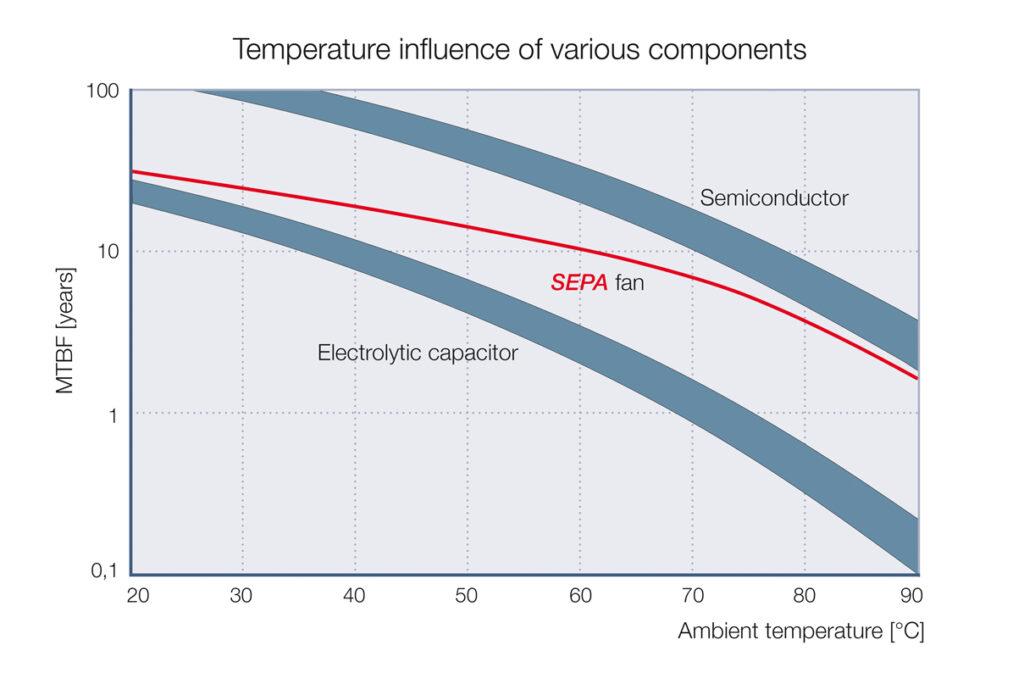Influence of temperature on service life
Technical info

Influence of Temperature on service life
Fans are a basic component of many electronic devices and industrial plants. Their lifespan and performance depend on numerous factors of which temperature is the most important.
In order to ensure the full lifespan and the correct function of the electronic components, sufficient thought should be given to a suitable thermal management concept during the development process. A rise in temperature increases the risk of failure of temperature-sensitive components (an increase in temperature of 10 °C doubles the risk of failure). Fans have a lifespan of up to 350000 h at an operating temperature of 20°C.

The curves refer to continuous operation at nominal voltage and consistent temperature and are average values. The reference temperature of fans refers to the temperature of the conveyed air whereas with CPU coolers the reference temperature refers to the temperature of the heat sink. The end of the lifespan is defined as the point when the noise limit data is exceeded or the initial speed drops by >= 30%. Unfavourable environmental conditions, chemical or mechanical air pollution or severe vibrations can have a negative effect on the lifespan.
Temperature fluctuations
Fluctuations in temperature can also be damageing. The continuous changes in termperature from hight to low can result in thermal expansion and contraction which in turn causes stress in the fan materials. This can lead to cracks that affect the structural integrity of the fan.
How to control the temperature
- Optimum operating temperature: Ideally fans should be operated in a temperature range that is neither too hot nor too cold. This can be achieved by adequately cooling the surrounding environment or by using either heat sinks or heat dissipation systems.
- Temperature monitoring: The installation of temperature sensors can contribute to detecting excess heat at an early stage so that necessary measures can be taken to reduce the temperature before damage occurs.
How the device temperature affects the failure risk of temperature-sensitive components
A fact that is commonly overlooked is the failure risk of temperature-sensitive components, in particular electrolytic capacitors which increases dramatically when the device temperature increases.
Electrolytic capacitors are popular electronic components that are used in many circuits for storing and discharging electrical energy. They comprise an electrode structure that is separated by an electrolyte material. During operation these capacitors heat up due to the electric current and the internal losses. The increase in temperature leads to accelerated chemical reactions in the electrolyte that can ultimately affect the lifespan of the component.

The integration of fans in electronic devices plays a decisive role in minimizing the risk of failure. Fans support the dissipation of heat from temperature-sensitive components and maintain the operating temperature at an optimum level. This improves the overall reliability of the electronic devices and reduces the failure risk of temperature-sensitive components.








